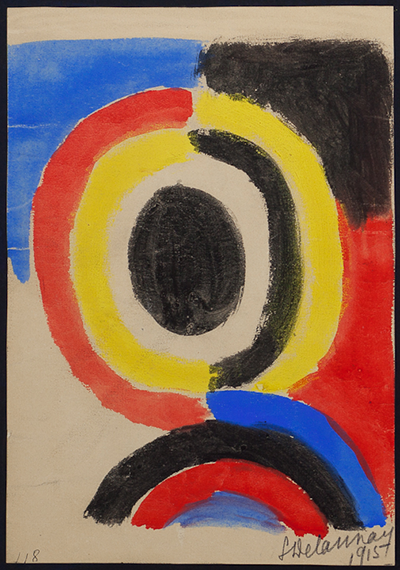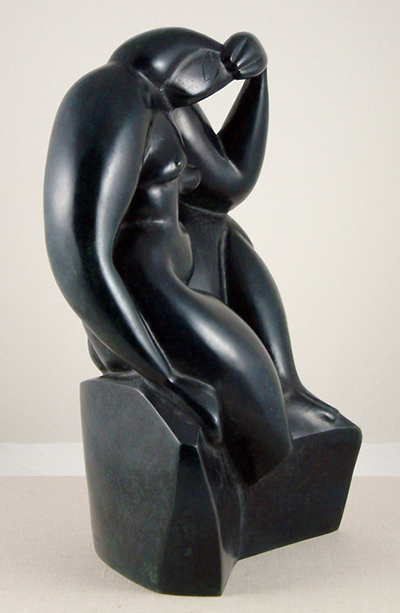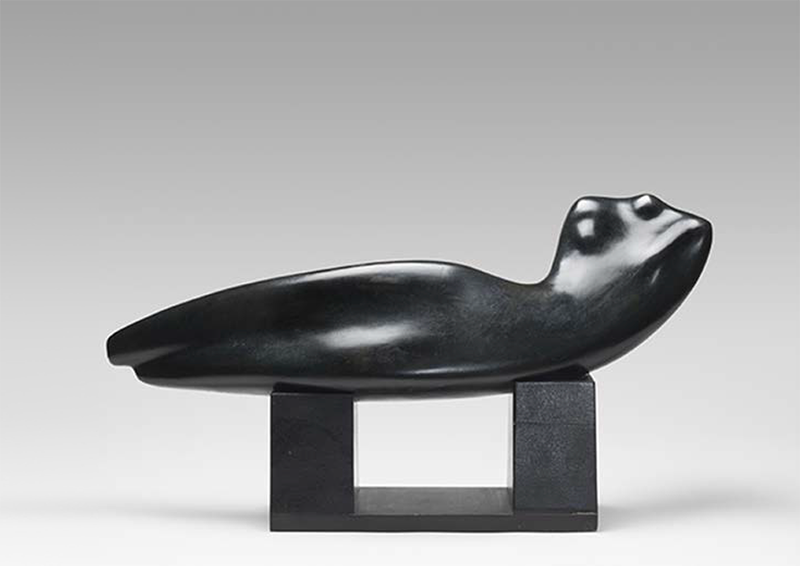Michael Kunichika is an associate professor of Russian, director of the Center for Russian Culture and interim director of the Mead Art Museum at Amherst. When Russia invaded Ukraine, he, like many in his field, wanted to demonstrate support for Ukrainian cultural institutions and the Ukrainian people.
He soon learned that the Ukrainian Institute of America was showing works by Alexander Archipenko, an artist born in Kyiv.
“I realized we have two of his sculptures in the Mead’s collection,” Kunichika says. “I thought it would be a small gesture of solidarity to put them up.”
Kunichika’s Mead colleagues told him the museum has other works by Ukrainian-born artists, too—20 in all, with about 20 more in the Center for Russian Culture. All are part of the Thomas P. Whitney ’37 Collection.
Staff quickly installed three of these works in the Mead’s Rotherwas Room: the two Archipenko sculptures and a painting by Sonia Delaunay-Terk. The museum also hosted a vigil for Ukraine.
“One of the things art does,” Kunichika says, “is to show how interconnected we are.”
Image

Disque, 1915

Sonia Delaunay-Terk (1885-1979)
French, born in Ukraine
Gouache on paper
Delaunay-Terk co-founded the Simultanism style and was the 10th artist to sign the Dimensionist Manifesto. She was also the first living woman to have a retrospective at the Louvre. To quote the Mead Art Museum label for this painting, “Sonia Delaunay applies bold colors in the simple geometric forms of a circle to create a sense of movement and spatial depth.”
Image

Femme Assise, 1912

Alexander Archipenko
Patinated bronze
Archipenko was born in Kyiv and became one of the most important sculptors of his era. Ukraine’s folk art tradition “left a lasting imprint” on his work, according to the Mead label: “The young artist was especially impressed by Kyiv’s icons, frescoes and mosaics. He also admired ancient female stone figures, called babas, on the grounds of Kyiv University.”
Torso in Space, 1936
Alexander Archipenko (1887-1964)
American, born in Ukraine
Bronze on wood base Archipenko lived for a time in Paris, where “he absorbed the foundations of Cubism, which permeates into his fragmented and elongated figures,” reads the Mead label. He was “particularly fascinated with space, volume and voids.”
